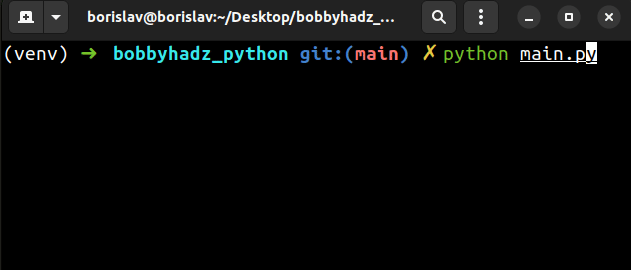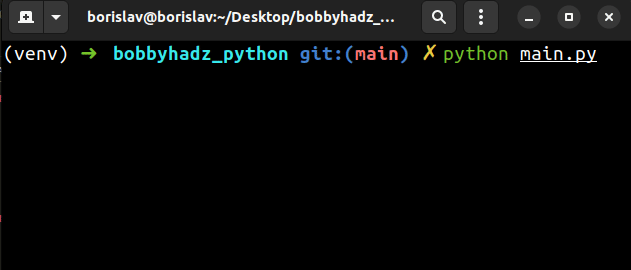How to Add user input to a Dictionary in Python
Last updated: Apr 8, 2024
Reading time·4 min

# Add user input to a dictionary in Python
To add user input to a dictionary in Python:
- Declare a variable that stores an empty dictionary.
- Use a
rangeto iterate N times. - On each iteration, prompt the user for input.
- Add the key-value pair to the dictionary.
employees = {} for i in range(3): name = input("Enter employee's name: ") salary = input("Enter employee's salary: ") employees[name] = salary # 👇️ {'Alice': '100', 'Bob': '100', 'Carl': '100'} print(employees)

The code sample prompts the user for input 3 times and adds each key-value pair to the dictionary.
The example uses the range() class to prompt the user for key-value pairs.
The range class is commonly used for looping a specific number of times in
for loops
If you only pass a single argument to the range() constructor, it is
considered to be the value for the stop parameter.
print(list(range(3))) # [0, 1, 2] print(list(range(5))) # [0, 1, 2, 3, 4]
The range starts at 0 and goes up to, but not including the specified number.
Note that the input() function always returns a value of type string.
If you need to add an integer value to the dictionary, use the int() class to convert the string to an integer.
employees = {} # 👇️ converting to integer with int() salary = int(input("Enter employee's salary: ")) employees['salary'] = salary # 👇️ {'salary': 100} print(employees)
# Add user input to a dictionary using a while loop
You can also use a while loop if you want
to make sure the dictionary has a length of at least N key-value pairs.
employees = {} max_length = 3 while len(employees) < max_length: name = input("Enter employee's name: ") salary = input("Enter employee's salary: ") employees[name] = salary # 👇️ {'Alice': '100', 'Bob': '100', 'Carl': '100'} print(employees)

If the dictionary has a length of less than 3, we keep prompting the user for input.
# Preventing the user from adding the same key to the dictionary
This approach is especially useful when you want to make sure the user doesn't enter the same key twice.
employees = {} max_length = 3 while len(employees) < max_length: name = input("Enter employee's name: ") salary = input("Enter employee's salary: ") # 👇️ Check if the key not in the dict if name not in employees: employees[name] = salary # 👇️ {'Alice': '100', 'Bob': '100', 'Carl': '100'} print(employees)

if statement to check if the key is not in the dictionary to avoid overriding the value of an existing key.The
in operator
tests for membership. For example, k in d evaluates to True if k is a
member of d, otherwise it evaluates to False.
my_dict = { 'id': 1, 'name': 'Bobby Hadz', 'salary': 500, } print('name' in my_dict) # 👉️ True print('another' in my_dict) # 👉️ False
k not in d returns the negation of k in d.
When used with a dictionary, the operators check for the existence of the
specified key in the dict object.
# Add user input to a dictionary using split()
You can also use the str.split() method to add user input to a dictionary.
employees = dict( input('Enter key and value separated by space: ').split() for _ in range(2)) # 👇️ {'id': '1', 'name': 'Alice'} print(employees)

The example expects that the user enters space-separated keys and values.
print('name Alice'.split()) # ['name', 'Alice']
The str.split() method splits the string into a list of substrings using a delimiter.
The method takes the following 2 parameters:
| Name | Description |
|---|---|
separator | Split the string into substrings on each occurrence of the separator |
maxsplit | At most maxsplit splits are done (optional) |
We used a space separator in the example, but you can also use a comma if the values of the dictionary contain spaces.
employees = dict( input('Enter key and value separated by space: ').split(',') for _ in range(2)) # 👇️ {'id': '1', 'name': 'Alice'} print(employees)

The code sample is similar to the previous one, however, we used a comma as the separator instead of a space.
This is useful because the values of the dictionary might contain spaces.
I've written a detailed guide on converting a comma-separated string to a dictionary in Python.
# Additional Resources
You can learn more about the related topics by checking out the following tutorials:
- How to take a List from user input in Python
- How to check if User Input is Empty in Python
- Using a For or While Loop to take user input in Pythono- Taking user input boolean (True/False) values in Python
- How to Create a Date from user Input in Python
- Taking a file path from user input in Python
- How to take Float user input in Python
- Multiple lines user Input in Python
- Only accept a single character from user Input in Python
- Creating a Tuple or a Set from user Input in Python
- How to Validate user input in Python
- Yes/No question with user input in Python
- How to save user input to a File in Python
- Using user input to Select an Option from a List in Python

